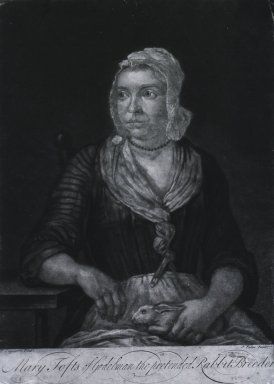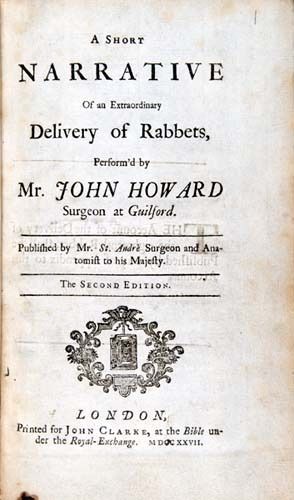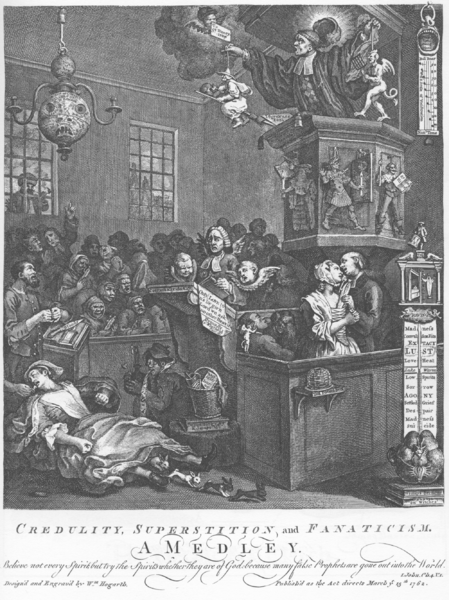In September 1726 a young woman named Mary Toft, about 25 at the time, went into labour with her third child. The pregnancy had been complicated. Forced to undertake heavy work in the fields throughout she stated that she had suffered a great deal of pain and a month prior had passed several pieces of flesh and clots.
On the night Mary laboured in September her neigbour watched incredulously as Mary produced several pieces of animal flesh. The neighbour showed these to Mary's mother in law, a midwife, who contacted John Howard a local surgeon and "man-midwife".
Sceptical, Howard attended Mary the following day. Initially he found nothing. However Mary once again went into labour a few days later. Howard returned and subsequently delivered three legs of a tabby cat, a rabbit leg and the intestines of a cat.
By November accounts of Mary had reached King George I who, fascinated, sent one of his physicians, Nathaniel St. Andre and the secretary to the Prince of Wales to investigate. Within hours of their arrival, Mary was delivered of a rabbit's torso. During their time in her company Mary continued to birth animal parts. In the course of his examination St. Andre determined that the rabbits were being formed in Mary's fallopian tubes.
Now convinced at the medical miracle he was witnessing, St Andre resolved to bring Mary Toft to court for a demonstration. He also went on the publish a pamphlet entitled 'A Short Narrative of an Extraordinary Delivery of Rabbets'.
In the meantime, however, the King had decided to send another surgeon named Cyriacus Ahlers to examine Mary. Ahlers witnessed several rabbit births but remained unconvinced, particularly when he examined the rabbits and discovered that they had dung pellets in their rectums containing straw and corn, which could not have, obviously, developed in Mary's womb.
Nonetheless, St Andre remained convinced and Mary was brought back to London. She was reportedly quite ill by this stage, suffering constant pain in her right side and having fits that made her lose conciousness. She was examined by several prominent physicians in London and went into labour several times. All to no avail.
That was when things got a bit, well, squirelly.
It was discovered that Mary's husband had been seen out and about frequently buying young rabbits. In addition, a porter confessed that he had been bribed to sneak one into her chamber. After several days of questioning and finally a threat to simply operate on her, Mary confessed on the 7th of December.
At the time of her miscarriage that occurred in August, notably when she had stated she passed pieces of flesh, a friend had helped her insert the body of a cat and the head of a rabbit into her uterus while her cervix remained open. She accomplished later "births" by simply placing pieces of rabbit into her vagina.
Given this story it's not surprising she was so sick by this stage. What is surprising is that she managed to survive!
The aftermath of the hoax brought down an enormous amount of ridcule on the medical profession. St Andre in particular, suffered greatly. Having only published his pamphlet on Mary several days earlier he was lambasted by the press.
Mary was imprisoned for several months for fraud before charges against her were dismissed and she returned to her village. She died in 1763. It's not stated anywhere, but I would be very surprised if she had any more children.
St Andre was dismissed from his position at court. He didn't help his position any further when a few years later he unsuccessfully treated an MP for a seizure and then proceeded to elope with the man's wife on the night of his death. St Andre died alone, in an almshouse at the age of 96. He reportedly refused to eat rabbit again.



No comments:
Post a Comment
What do you think? Tell me more!